Explore all New Cars of 2024
 Lamborghini Urus SE Plug-in Hybrid Revealed: Top 7 Highlights
Lamborghini Urus SE Plug-in Hybrid Revealed: Top 7 Highlights

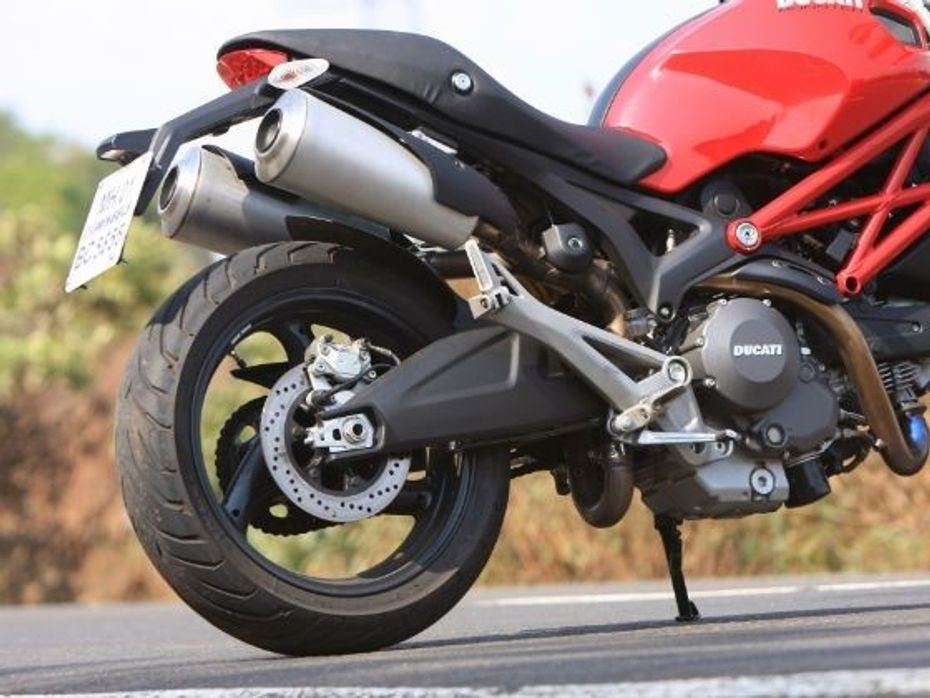
Motorcycle tyres provide the only contact with the ground and play a very important role in how a motorcycle responds to acceleration, steering, braking, handling, absorbing road undulations and carrying the load of the rider and passenger.
Riders should learn how to care for tyres to keep them in good condition and more importantly, when to replace old or worn out tyres for safety and control.
Tyre Types
Broadly, tyres may be classified into two types for two wheelers – tubeless and tube-type tyres. Tubeless tyres are fitted with alloy wheels whereas tube-type tyres are usually used on spoked steel rimmed wheels.
There are however, several other classifications depending on tyre construction (radial or cross ply), usage (street, racing slicks, dual sport, offroad knobbies) and the kind of rubber compound (soft, medium, hard, dual compound) used in a tyre.
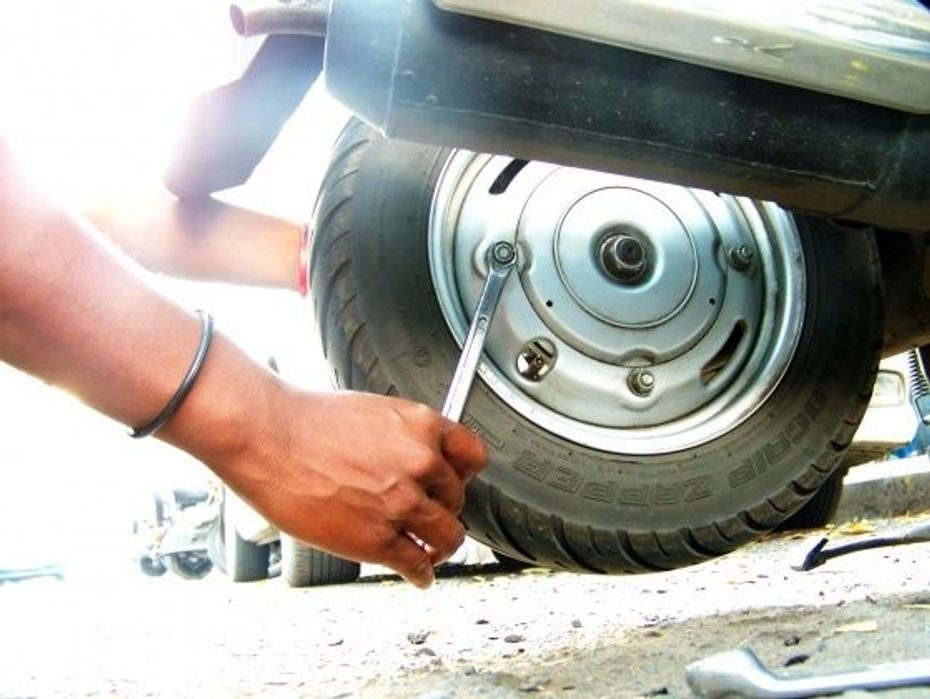
Tyre Maintenance
It’s important that motorcycle riders do periodic inspection of their tyres. Regularly inspect tyres for cuts, bulges, uneven wear or objects embedded in the tread pattern.
Washing the tyres with chemicals or any kind of polishing may be detrimental. Instead, just stick to mild soap and water.
Tyres may have contact with oil or petrol and prolonged contact causes contamination of the rubber compound, in addition to causing lack of traction. Washing the tyres periodically, especially after a long ride is a good idea.
Tyres stored in direct sunlight for long periods of time will harden with age more quickly than those kept in a dark or dimly lit area.
Maintain manufacturer recommended air pressure in your motorcycle’s tyres and check this at regular intervals – at least once a week and before long trips. Riding on underinflated tyres or overinflated tyres is dangerous.
Under inflation may cause irregular tread wear, affect cornering and may also cause sudden tyre failure. Overinflated tyres are more likely to be cut, punctured and may cause the tyre to wear out quickly at the centre of the contact patch.
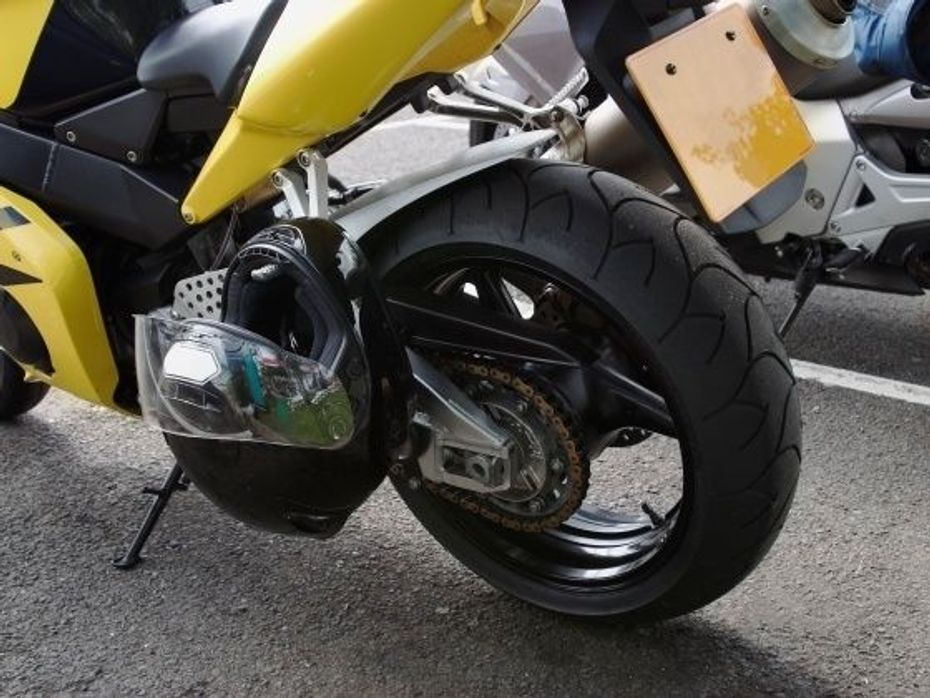
When to replace your tyre
When ignored, old or worn out motorcycle tyres can mean the difference between an enjoyable ride and disaster.
As tyres age and wear out, the first sign is of the back of the motorcycle losing grip when cornering or under hard braking. First thing to do is to visually inspect the tyre. How worn out is the tread pattern?
Even if the tyre seems to have sufficient tread on the sides, look at the centre of the tyre. Is the tread on the centre flat? Or does the rubber look different in the centre contact patch. If it’s a yes to any of these questions, it’s time to replace your tyre.
The second thing to look out for, are cracks in the tyre. Even if there’s sufficient tread on the tyres, sometimes small cracks may develop on the sides. This is called dry rotting. Tyres crack as they dry out and get old. Dry, hot weather, or repeated cold/hot cycles, being left out in the sun and inconsistent air pressure cause these conditions. Typically, tyres should be replaced within five years of use, even if there’s not too much wear and tear on a visual inspection. However, if tyres have severe cracking due to improper storage, they might need replacement much earlier.
If you use tube-type tyres, consider replacing the tubes if they have been patched or repaired for two or more punctures. Replacement tubes aren’t that expensive and for that price, and you get more peace of mind. Even if there are no punctures in the tubes, they should be replaced whet tyres are being replaced. For tubeless tyres, avoid indulging in patch repair jobs for bigger punctures or if there’s damage to the sidewalls. If your tyre has seen more than a couple of punctures and plug repairs, consider replacing it.
Typically, a motorcycle’s rear tyre wears out faster than the front tyre, since the rear tyre is the one which is the driven wheel. So, it is not always required to change both tyres at the same time. However, keep in mind overall age of tyres and make visual inspections of both tyres every now and then.
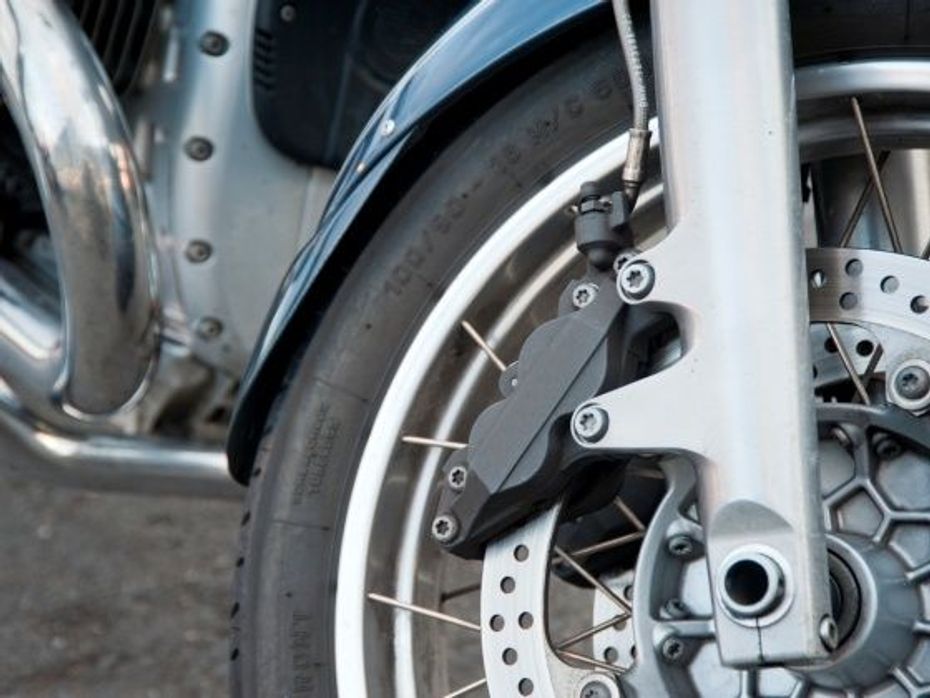
Tyre size
A motorcycle tyre has to fit correctly on the wheel rim of the motorcycle in order to function properly. It is important to follow the manufacturer’s recommendations when it is time to replace a motorcycle tyre.
The first step is to understand what size tyre will fit your motorcycle. Modern street tyres have the size data embossed on the sidewall, in a combination of numbers arranged in a particular manner.
For the sake of understanding these numbers, let’s take the example of the tyre size of a Yamaha FZ-16. The rear tyre size is denoted by 140/60-R 17.
The number 140 tell us that the tyre is 140mm at its widest point, while the second number, 60, denotes the tyre’s sidewall height is 60% of the width of the tyre. The number 17 tells us that this tyre is for a rim size of 17 inches. So, if you have a FZ-16, you should ensure that you pick up the correct size tyre for a replacement.
Mounting a tyre with even minor changes, for instance, a fatter tyre or with a marginally different sidewall height could affect handling, tyre life and even cause the tyre to suddenly come off the rim.
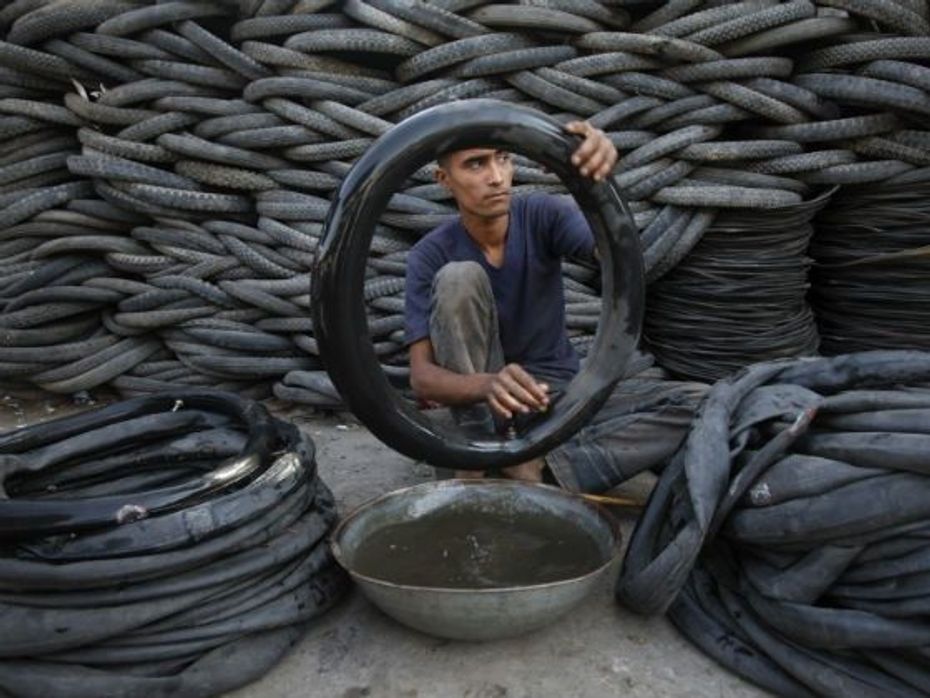
What is the best tyre for your motorcycle?
Choosing the right tyre depends on the rider’s usage, the kind of surface you’ll be riding on mostly, and riding style.
If you’re primarily a street rider then go for standard street tyres. They give good grip, offer good handling in dry and wet conditions and will tackle all kinds of obstacles in urban riding.
If you want more traction, then it’s a good idea to go for softer rubber. However, softer rubber will wear out sooner as well and takes longer to warm up for optimum grip. Race tyres (racing slicks) allow for cornering at sharp angles, allow extreme acceleration and speed but wear out sooner as well due to the soft rubber. On the street, in practical day to day usage, race tyres may not work well. They need more time to warm up, and have virtually no tread pattern for traction on changing road surfaces.
If you are the touring kind and want more mileage (life of the tyre) then you should opt for firmer rubber. The rule of thumb is – soft rubber sticks and hard rubber lasts.
If you intend to travel some distance over the highway to the hills and then explore gravel and dirt back roads, you should think about getting dual sport tyres. These offer good grip over sand, gravel and slush and will work just as well on tarmac as well.
If you’re the serious off roading types, then you should consider off road tyres. These tyres typically sport a knobby design and are meant for off roading in rough terrain. Off road tyres however, offer wobbly handling on tarmac and the knobbies may wear out sooner under braking and acceleration on tarmac.
Overall, tyres with good grip will give a motorcycle increased acceleration, speed and better handling. So, it’s a good idea to get to know the tyres of your motorcycle better – to know what type of tyres are needed and when they are worn out and need replacement for a smoother and safer ride.
India's largest automotive community